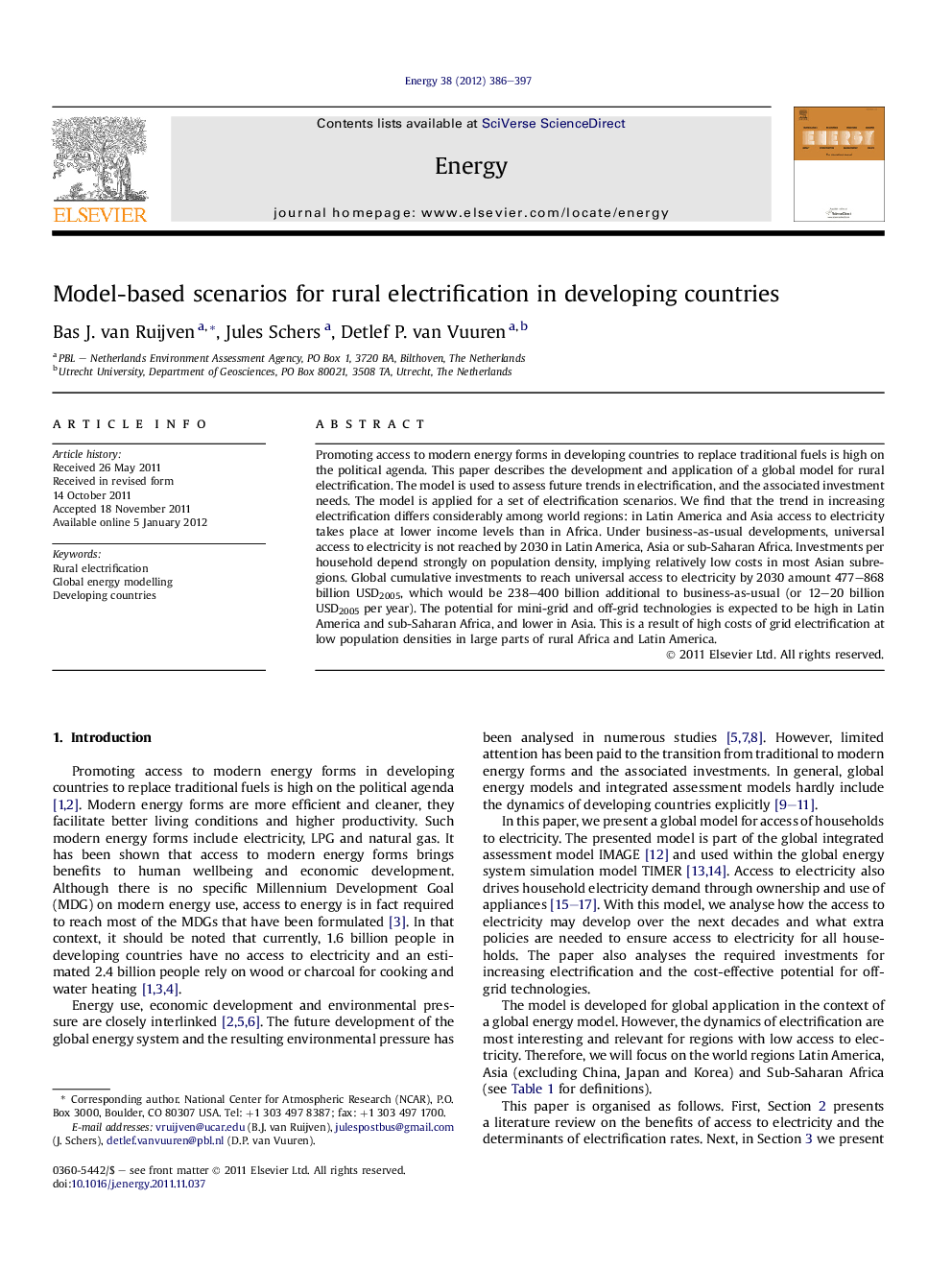| Article ID | Journal | Published Year | Pages | File Type |
|---|---|---|---|---|
| 1733893 | Energy | 2012 | 12 Pages |
Promoting access to modern energy forms in developing countries to replace traditional fuels is high on the political agenda. This paper describes the development and application of a global model for rural electrification. The model is used to assess future trends in electrification, and the associated investment needs. The model is applied for a set of electrification scenarios. We find that the trend in increasing electrification differs considerably among world regions: in Latin America and Asia access to electricity takes place at lower income levels than in Africa. Under business-as-usual developments, universal access to electricity is not reached by 2030 in Latin America, Asia or sub-Saharan Africa. Investments per household depend strongly on population density, implying relatively low costs in most Asian subregions. Global cumulative investments to reach universal access to electricity by 2030 amount 477–868 billion USD2005, which would be 238–400 billion additional to business-as-usual (or 12–20 billion USD2005 per year). The potential for mini-grid and off-grid technologies is expected to be high in Latin America and sub-Saharan Africa, and lower in Asia. This is a result of high costs of grid electrification at low population densities in large parts of rural Africa and Latin America.
► We assess trends in electrification and associated investment needs in a global model. ► Electrification varies: Latin America and Asia gain access at lower income levels than Africa. ► Full access to electricity is not reached by 2030 in business-as-usual projections. ► Global cumulative investment for full access by 2030 amount 477–868 billion USD. ► Latin-America and Africa have a large potential for mini/off-grid technologies.
